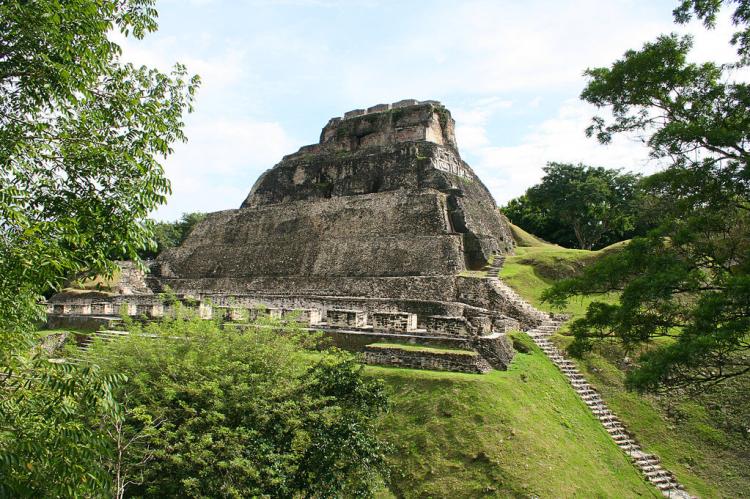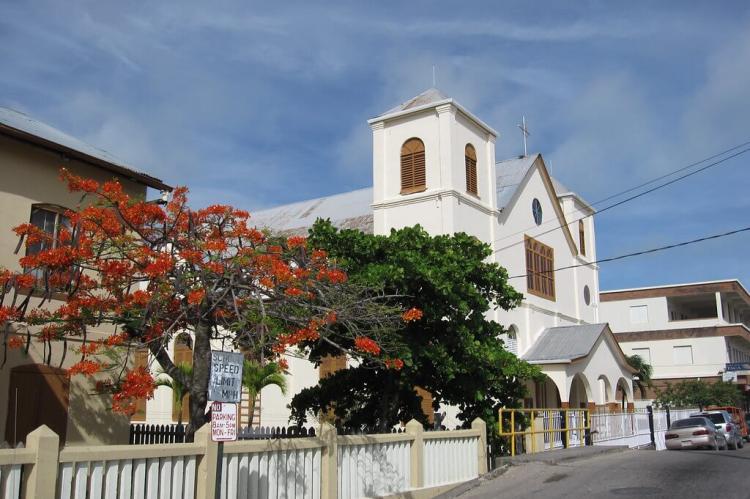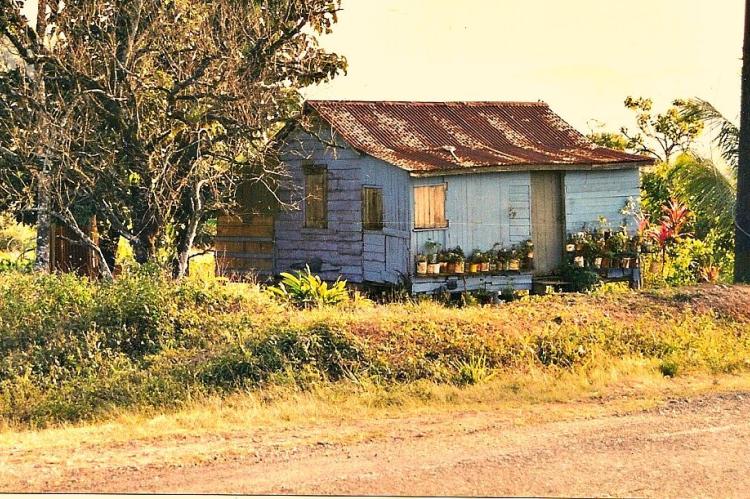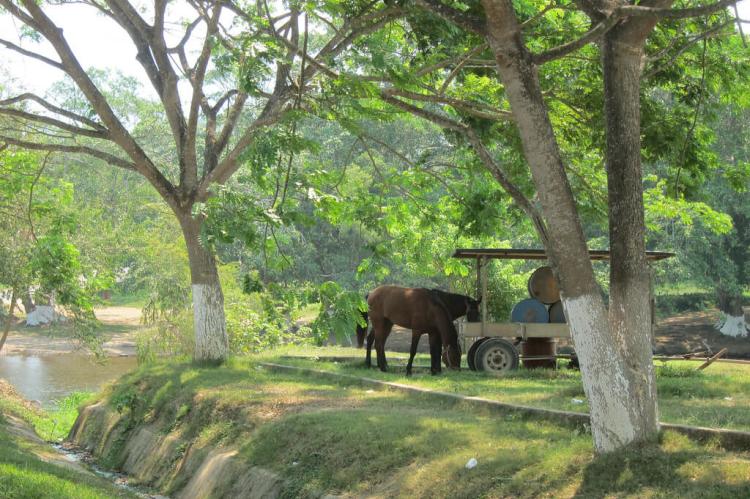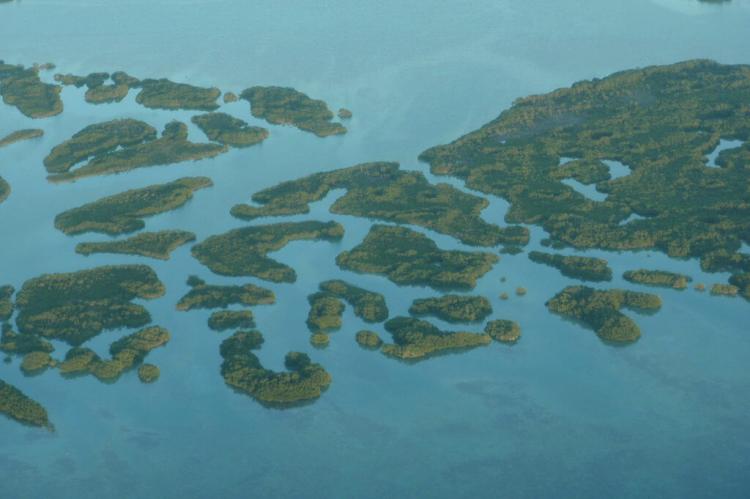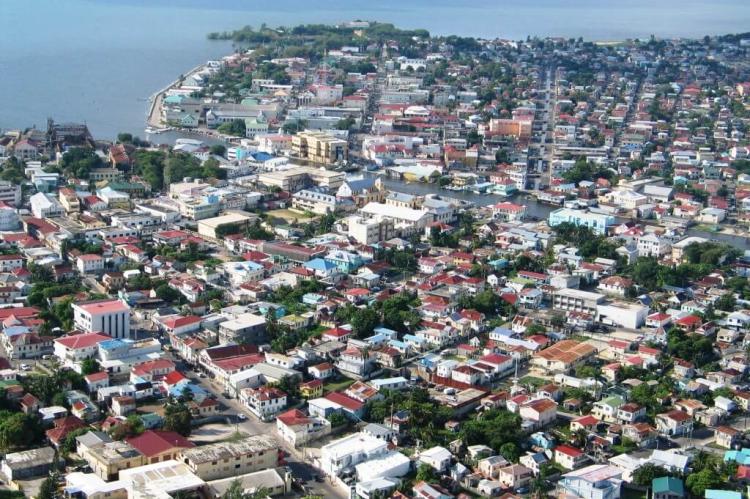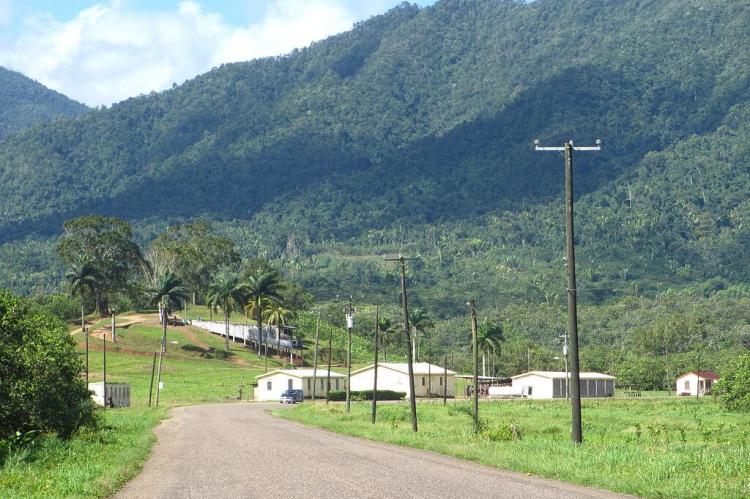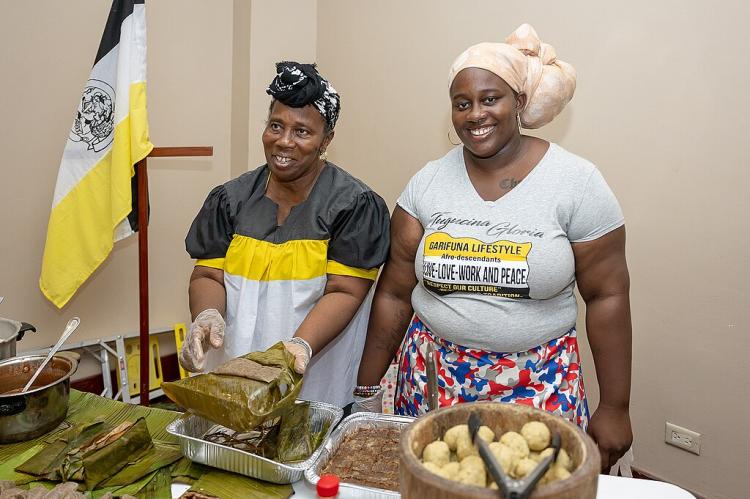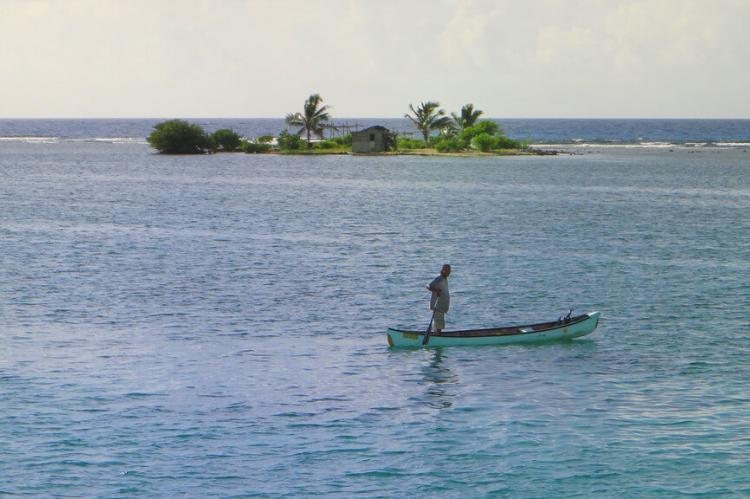The Cultural Landscape of Belize
Belize, located in Central America, has a vibrant and diverse cultural landscape shaped by its rich history and the convergence of various ethnic groups. The Mayan civilization, British colonialism, African heritage, and the presence of indigenous communities influence the country's cultural fabric.
The Melting Pot of Belize: A Tapestry of Cultures
Nestled in the heart of Central America, Belize is a cultural melting pot where diverse traditions and influences converge, creating a vibrant and captivating mosaic. From the ancient Maya civilizations to the colonial legacies and waves of immigration, this tiny nation boasts a rich tapestry woven with threads from across the globe.
Indigenous Heritage and Maya Roots
Belize's cultural landscape is deeply rooted in the heritage of the Maya people, whose ancestors once ruled over a vast empire spanning modern-day Mexico, Guatemala, and Belize. The remnants of their advanced civilization can be found in the awe-inspiring ruins of cities like Caracol, Xunantunich, and Cahal Pech, where intricate stone carvings and pyramids stand as testaments to their architectural prowess and reverence for nature.
Beyond the physical structures, the Maya have left an indelible mark on Belize's cultural identity. The modern Maya communities still uphold their traditional practices, beliefs, and knowledge systems. From the vibrant textiles woven with symbolic patterns to the ancient culinary techniques used in preparing dishes like cochinita pibil (slow-roasted pork) and tamales, the Maya influence permeates every aspect of Belizean life.
Colonial Legacies and Diverse Influences
Belize's cultural tapestry is further enriched by the colonial legacies that have shaped its history. In the 17th century, the British Empire established a presence in the region, bringing its language, customs, and architectural styles. The colonial influence can be seen in charming seaside towns like Belize City and San Pedro, where brightly colored wooden houses and Anglican churches remind the country of its British heritage.
However, Belize's cultural landscape is not solely defined by its Maya and British roots. Waves of immigrants from diverse backgrounds have added their threads to the tapestry, creating a vibrant and multicultural society. The Garifuna people, descendants of African and Carib Indigenous communities, have contributed their unique language, music, and dance traditions. In contrast, the European Mennonite communities have introduced distinct agricultural practices and way of life.
Artistic Expression and Culinary Delights
Belize's rich cultural diversity is reflected in its artistic expressions and culinary delights. The rhythmic beats of the Garifuna drumming and the soulful melodies of the Brukdown music are woven into the fabric of Belizean culture, captivating audiences with their energy and storytelling.
Belize's cuisine is a delectable fusion of flavors and techniques, blending indigenous ingredients like cassava and plantains with various immigrant communities' spices and cooking methods. From the comforting rice and beans to the tantalizing seafood dishes like conch fritters and sere (a savory fish soup), Belizean cuisine celebrates diversity and culinary traditions.
Preserving Cultural Heritage
Despite globalization and modernization's influences, Belize remains committed to preserving its cultural heritage. Initiatives such as the Belize Audubon Society and the Toledo Ecotourism Association work tirelessly to protect the country's natural and cultural treasures, promote sustainable tourism practices and foster a deep appreciation for the nation's diverse heritage among locals and visitors alike.
Educational programs and cultural festivals are vital in passing down traditions to younger generations, ensuring that the threads of Belize's cultural tapestry remain vibrant and unbroken.
Embracing Diversity and Fostering Unity
Belize's cultural landscape is a testament to the power of diversity and the beauty that arises from the harmonious coexistence of different cultures. While each community maintains unique traditions and practices, there is a shared sense of unity and pride in the nation's rich cultural mosaic.
As Belize continues to evolve and adapt to the changing global landscape, its cultural tapestry remains a source of strength and resilience. Belize is a shining example of how different threads can be woven to create a magnificent and enduring cultural masterpiece by embracing diversity, fostering cross-cultural understanding, and preserving its unique heritage.
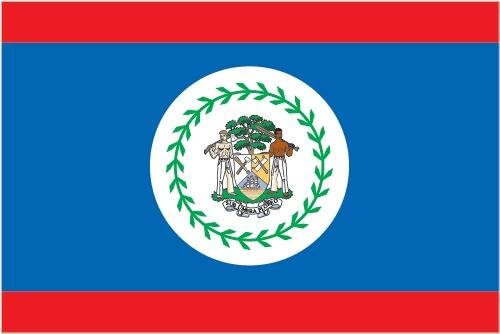
The official flag of Belize.
Cultural Geography of Belize
Largest Cities / Metro Areas
Ranked by population estimate (2023):
Belize City (61,400): The largest city of Belize and the former capital of British Honduras, Belize City is the country's principal port and business hub. It is located at the mouth of Haulover Creek, a distributary of the Belize River, along the country's northeastern Caribbean coast. It is a diverse city; Creoles are the major ethnic group, and English is the most spoken language, followed by Kriol.
San Ignacio (26,100): San Ignacio is the cultural-economic hub of the Cayo District in western Belize. Lying along the Belize River, near the border with Guatemala, the city is the country's second-largest urban area, along with its sister town of Santa Elena. The diverse population includes Mestizo, Kriol, and Maya.
San Pedro (17,400): Located in the southern part of Ambergris Caye along the Belize Barrier Reef, San Pedro, once a sleepy fishing village, was granted the status of a town in 1984. San Pedro's inhabitants are known as San Pedranos; most originally came from Mexico.
Orange Walk Town (15,300): Orange Walk Town is the fourth-largest town in Belize and the capital of the Orange Walk District. It is located on the left bank of the New River, approximately 87 km (54 mi) north of Belize City. About 78% of the population identifies as Indigenous Latino, and 11% identify as Mennonite.
Belmopan (13,300): Belmopan has been the capital of Belize since 1970 when the government moved from Belize City after that city was nearly destroyed by a hurricane in 1961. It is located in the Cayo District at 76 m (249 ft) above sea level. Its population is of mixed ethnicities.
Dangriga (10,700): Dangriga, formerly known as Stann Creek Town, is located on the southern Caribbean coast of Belize at the mouth of the North Stann Creek River. It is the capital of the Stann Creek District and the largest settlement in southern Belize. The population is mainly a mixture of Garinagu, Kriols, and Mestizos.
Corozal (9,800): Corozal Town is the capital of the Corozal District in northern Belize, approximately 15 km (9 mi) from the border with Mexico. Built over an ancient Mayan city, Corozal was founded in 1848 by refugees from the Mayan uprising against the Spanish in neighboring Yucatán.
Benque Viejo del Carmen (6,600): Benque is the westernmost town in Belize, at the Guatemalan border. The population is primarily Mestizo. San Ignacio lies 13 km (8 mi) to the east, and Melchor de Mencos is just across the border in Guatemala. The Mopan River runs along the town's north and west edges.
Ladyville (5,400): Ladyville is located on the north bank of the Belize River, approximately 5 miles inland from the Caribbean Sea. The village has become a suburb of Belize City, about 13 km (8 mi) to the southeast.
Punta Gorda (5,200): Punta Gorda is the capital and largest town of Toledo District in southern Belize. It is a seaport and fishing village. Its inhabitants primarily have Garifuna, East Indian, Kriol, and Maya descent.
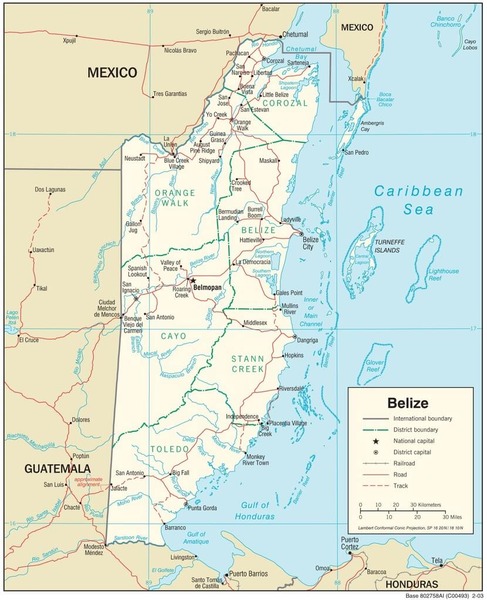
CIA map of Belize.
Geopolitical Regions (Zones)
Belize is divided into six geopolitical regions or zones characterized by their unique landscapes, natural features, and cultural aspects. These six zones showcase the country's diverse natural beauty, cultural heritage, and adventure opportunities. In addition, each region has its unique attractions, making the country a captivating destination for nature lovers, history enthusiasts, and those seeking tropical adventures.
Northern Belize (North)
This region encompasses the northernmost part of Belize and is predominantly flat with fertile soil. It is known for its agricultural activities, including sugar cane and citrus fruit cultivation. The area is also home to the Rio Bravo Conservation and Management Area, which protects a diverse range of flora and fauna.
Belize District (Central)
Located along the eastern coast, the Belize District is home to the country's largest city, Belize City. This region includes offshore islands, mangrove forests, and coastal wetlands. It is a commerce, tourism, and transportation hub, with historical sites such as the Belize City Swing Bridge and the Belize Museum.
Belize Cayes (Central)
The Belize Cayes refer to the numerous islands situated off the coast of Belize, including the popular tourist destination of Ambergris Caye. These islands offer stunning beaches, crystal-clear waters, and vibrant coral reefs. In addition, the Cayes are renowned for their marine biodiversity, making them a prime spot for snorkeling, diving, and fishing.
Interior Belize (Central)
The central interior of Belize comprises lush jungles, rolling hills, and expansive savannas. This region is home to wildlife sanctuaries and reserves, such as the Community Baboon Sanctuary and the Crooked Tree Wildlife Sanctuary. Visitors can enjoy activities like wildlife spotting, cave exploration, and immersing themselves in the area's rich biodiversity.
Western Belize (West)
The Maya Mountains and vast expanses of tropical rainforests characterize this region. It has numerous national parks and protected areas, including the Mountain Pine Ridge Forest Reserve and the Caracol Archaeological Reserve. Western Belize offers opportunities for outdoor activities like hiking, birdwatching, and exploring ancient Maya ruins.
Southern Belize (South)
The southern region is known for its diverse ecosystems, including coastal plains, rivers, wetlands, and the stunning Belize Barrier Reef Reserve System. This UNESCO World Heritage site is a haven for marine life and offers exceptional diving and snorkeling experiences. The region also features cultural attractions like the vibrant Garifuna communities in towns like Dangriga and Hopkins.
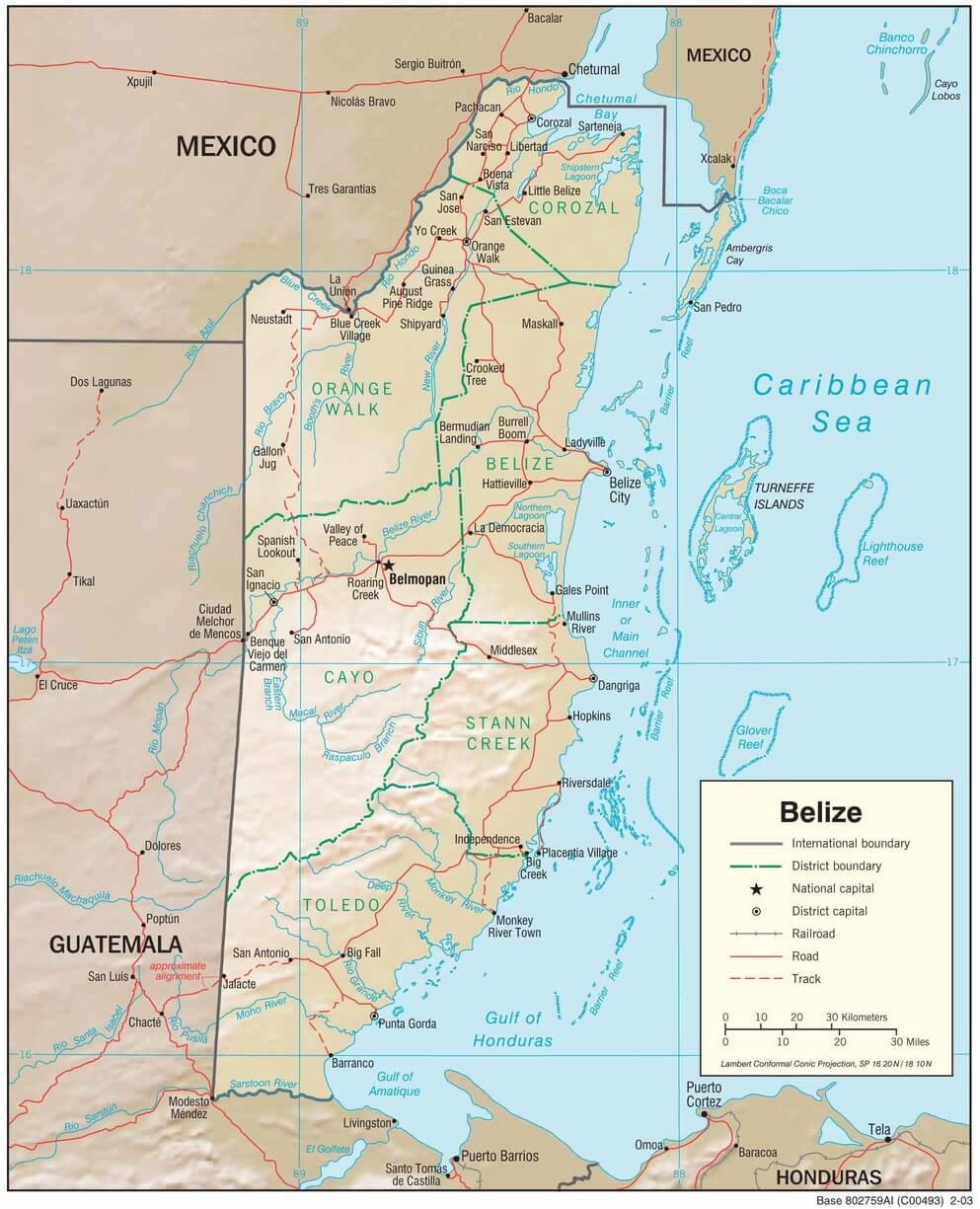
Belize physiographic map.
Administrative Divisions
Belize's administrative divisions include six districts with a capital city and 31 constituencies.
Districts
The six districts are located in different geographic regions of the country. Here's how they fit into these regions:
Corozal (Capital: Corozal Town): This district is located in the northernmost part of Belize and is part of the Northern Region. It shares a border with Mexico and is known for its agricultural activities, including sugarcane farming.
Orange Walk (Capital: Orange Walk Town): Located in the northwestern part of Belize, the Orange Walk District is also part of the Northern Region. It is known for its vast sugar cane fields and diverse cultural heritage, including a significant Mestizo population.
Belize (Capital: Belize City): The Belize District is located in the east-central part of the country and is home to Belize City, the country's largest city. This district includes various offshore islands and cays. Part of the Central Region, it encompasses urban and rural areas.
Cayo (Capital: San Ignacio): Situated in the western part of Belize, the Cayo District is the largest district in the country. It is part of the Western Region and is known for its stunning natural landscapes, including the Maya Mountains, rivers, waterfalls, and ancient Maya ruins such as Xunantunich and Caracol.
Stann Creek (Capital Dangriga): Located along the southeastern coast of Belize, the Stann Creek District is part of the Southern Region. It includes the coastal town of Dangriga, formerly known as "Stann Creek Town," and the popular tourist destinations of Placencia and Hopkins. The district is known for its beautiful beaches, marine reserves, and the rich cultural heritage of the Garifuna people.
Toledo (Capital: Punta Gorda): Toledo is Belize's southernmost and least populous district and is also part of the Southern Region. It is known for its lush rainforests, pristine rivers, and diverse wildlife. The district is home to several indigenous communities, including the Maya, and offers opportunities for ecotourism and exploration.
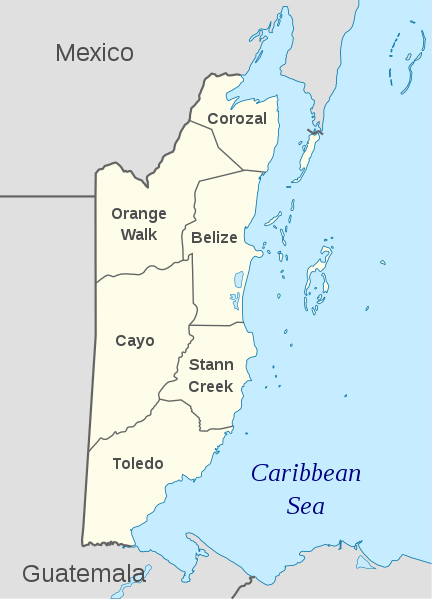
Map illustrating the administrative divisions of Belize.
Border Dispute
Throughout history, Guatemala has claimed sovereignty over all or part of Belizean territory. However, the border dispute remains unresolved and contentious.
Historical, Cultural, and Natural Landmarks
Belize boasts a rich blend of historical, cultural, and natural landmarks. Its historical sites provide insight into its Maya heritage, while its diverse cultural experiences and natural wonders make it a unique destination.
North
Northern Belize is known for its rich cultural heritage, vibrant wildlife, and beautiful natural landscapes. Here are some popular attractions in the Northern region:
Lamanai: Lamanai is one of Belize's largest and most impressive Mayan archaeological sites. Visitors can explore ancient temples, plazas, and ceremonial structures near the New River Lagoon. Lamanai is also known for its abundant wildlife, including howler monkeys and crocodiles.
Corozal Town: Corozal is a charming town near the border with Mexico, known for its friendly atmosphere and historical sites. Explore the town's central square, visit the Santa Rita Archaeological Site, and learn about the region's history and culture.
Shipstern Nature Reserve: In the Corozal District, Shipstern Nature Reserve is a protected area encompassing diverse ecosystems, including wetlands, savannas, and tropical forests. Visitors can hike through the reserve, go birdwatching, or take boat tours to explore the mangrove forests and spot wildlife.
Crooked Tree Wildlife Sanctuary: Crooked Tree is a small village on a lagoon surrounded by a vast wetland ecosystem. The Crooked Tree Wildlife Sanctuary is home to various bird species, including the iconic Jabiru stork. Visitors can take boat tours or go birdwatching to observe the rich avian life.
Altun Ha: Altun Ha is another crucial Mayan archaeological site in Northern Belize. It features impressive pyramids and ceremonial plazas, and visitors can climb to the top of the main temple for panoramic views of the surrounding area.
Bacalar Chico National Park and Marine Reserve: Situated on the northern tip of Ambergris Caye, Bacalar Chico is a protected area encompassing terrestrial and marine ecosystems. Visitors can snorkel or dive in the clear waters to explore the vibrant coral reefs, swim with tropical fish, and even encounter manatees.
Sarteneja: Sarteneja is a coastal village known for its fishing heritage and relaxing beach atmosphere. It offers beautiful beaches, opportunities for water sports, and a chance to interact with the local community. Visitors can also take boat tours to explore nearby cayes and observe marine life.
Rio Bravo Conservation and Management Area: The Rio Bravo Conservation and Management Area is a vast protected area in Northern Belize. It is home to diverse wildlife, including jaguars, tapirs, and numerous bird species. Visitors can take guided tours to explore the trails, spot wildlife, and learn about conservation efforts.
These attractions in Northern Belize offer a blend of history, nature, and cultural experiences, allowing visitors to immerse themselves in the region's unique beauty and heritage.
Central
Central Belize offers a variety of attractions that cater to different interests. Here are some popular attractions in the Central region:
Belize City: As the country's largest city and commercial hub, Belize City has several attractions worth exploring. You can visit the Museum of Belize to learn about the country's history, explore the ancient ruins of Altun Ha, or stroll along the waterfront at the Belize City Swing Bridge.
Belize Zoo: Located west of Belize City, the Belize Zoo is a renowned wildlife conservation center. It focuses on showcasing native species in their natural habitats. Visitors can see various animals, such as jaguars, tapirs, monkeys, and toucans.
Belmopan: Belmopan is the capital city of Belize and offers a calmer and more laid-back atmosphere than Belize City. Here, you can visit the Government House, explore the National Assembly building, or relax in the tranquil surroundings of the Guanacaste National Park.
Blue Hole National Park: Situated near Belmopan, it is named after its striking geological feature, the Blue Hole. It is a giant sinkhole filled with turquoise waters, surrounded by lush rainforest. Visitors can swim, dive, or explore the park's hiking trails.
St. Herman's Cave: Located within the Blue Hole National Park, St. Herman's Cave is an impressive underground cave system. Visitors can take guided tours to explore the caverns, view ancient Mayan artifacts, and learn about the cave's geological formations.
Mountain Pine Ridge Forest Reserve: This vast protected area is known for its pine forests, waterfalls, and natural wonders. You can visit attractions such as Thousand Foot Falls, Rio On Pools, and Big Rock Falls. The reserve is also home to the stunning Caracol Maya Ruins, one of Belize's most significant archaeological sites.
Actun Tunichil Muknal (ATM) Cave: Considered one of the most sacred caves in the Maya underworld, ATM Cave is an archaeological site and natural wonder. Adventurous visitors can take guided tours to explore the cave's intricate chambers and view ancient Mayan artifacts, including skeletal remains and ceremonial pottery.
Community Baboon Sanctuary: Located north of Belize City, the Community Baboon Sanctuary is a unique community-led conservation project. It aims to protect the habitat of the black howler monkey, locally known as the baboon. Visitors can take guided tours to observe these primates in their natural environment.
These attractions offer a glimpse into Belize's rich natural and cultural heritage, providing diverse experiences for visitors to Central Belize.
West
Western Belize is known for its stunning natural landscapes, ancient Maya sites, and adventure activities. Here are some attractions in the Western region:
San Ignacio: Serving as the gateway to Western Belize, San Ignacio is a vibrant town with a lively atmosphere. It offers easy access to various attractions and is a popular base for exploring the region. You can explore local markets, visit the Cahal Pech Maya Ruins, or participate in cultural activities.
Xunantunich: Located near San Ignacio, Xunantunich is an impressive Maya archaeological site. The main attraction is El Castillo, a magnificent pyramid that offers panoramic views of the surrounding area. In addition, you can explore the ancient plazas, temples, and royal residences while learning about Maya history and culture.
Barton Creek Cave: This cave system is a popular attraction for adventurous travelers. You can go on guided canoe tours through the cave, observing stalactites, stalagmites, and ancient Maya artifacts. In addition, it's a unique opportunity to experience the mystical ambiance of an underground river.
Mountain Pine Ridge Forest Reserve: Extending into Western Belize, the Mountain Pine Ridge Forest Reserve offers a range of attractions. You can visit the Rio On Pools, a series of natural pools and cascades ideal for swimming and relaxing. Another highlight is Big Rock Falls, a picturesque waterfall with a swimming area. The reserve also features scenic viewpoints, hiking trails, and opportunities for birdwatching.
Caracol: Caracol is one of the most important Maya sites in Belize. It was once a prominent political and economic center and is home to the tallest artificial structure in the country, the Caana (Sky Palace). Exploring Caracol allows you to appreciate ancient Maya architecture and gain insights into their civilization.
Rio Frio Cave: Located within the Mountain Pine Ridge Forest Reserve, this massive limestone cave has a river flowing through it. Visitors can walk along the riverbank, admiring the impressive stalactites and stalagmites while enjoying the cool, serene atmosphere inside the cave.
Macal River: The Macal River is a scenic waterway that flows through western Belize, providing opportunities for kayaking, canoeing, and river tubing. Exploring the river allows you to witness the region's lush vegetation, spot wildlife, and enjoy a peaceful outdoor experience.
These attractions in Western Belize offer a combination of history, natural beauty, and adventure, providing visitors with diverse experiences.
South
Southern Belize is known for its pristine natural beauty, stunning coastline, and diverse marine life. Here are some popular attractions in the Southern region:
Placencia: Placencia is a charming coastal village with beautiful sandy beaches and a laid-back atmosphere. Visitors can enjoy swimming, sunbathing, and water sports activities. The town also offers a range of restaurants, bars, and shops. From Placencia, you can explore nearby attractions like Laughing Bird Caye National Park and the Silk Cayes.
Cockscomb Basin Wildlife Sanctuary: Known as the world's first jaguar preserve, Cockscomb Basin Wildlife Sanctuary is a vast protected area teeming with tropical rainforests, waterfalls, and diverse wildlife. Visitors can hike the nature trails, spot exotic birds, and learn about jaguar conservation efforts.
Hopkins: Hopkins is a Garifuna village known for its vibrant culture, music, and delicious cuisine. Visitors can immerse themselves in the local traditions, enjoy drumming and dancing performances, and savor traditional Garifuna dishes. The village is also a gateway to exploring the nearby Barrier Reef and marine activities.
Glover's Reef Atoll: Located offshore from the coast of Southern Belize, Glover's Reef Atoll is a UNESCO World Heritage Site and a paradise for divers and snorkelers. This pristine coral atoll offers excellent visibility, deep coral formations, and abundant marine life, including sea turtles, rays, and colorful fish.
Blue Creek Cave: Also known as Hokeb Ha Cave, Blue Creek Cave is a stunning underground cave system with crystal-clear blue waters. Visitors can take guided tours to swim or float on inner tubes through the cave, admiring the beautiful rock formations and learning about the cave's history and geology.
Maya Beach: Maya Beach is a serene and picturesque stretch of coastline located near Placencia. It offers tranquil beaches, clear waters, and a relaxed atmosphere. Visitors can swim, sunbathe, or enjoy the breathtaking views of the Caribbean Sea.
Nim Li Punit: In the Toledo District, Nim Li Punit is a Mayan archaeological site featuring impressive stelae (carved stone monuments) and plazas. It is open to visitors and offers a unique opportunity to explore an ancient Maya site in a tranquil and scenic setting.
Rio Blanco National Park: Situated near the village of Santa Cruz, Rio Blanco National Park is a tropical rainforest reserve with beautiful waterfalls, natural pools, and diverse wildlife. Visitors can hike through the lush forest, swim in the refreshing waters, and spot colorful birds and other wildlife.
These attractions showcase the natural beauty, cultural richness, and historical significance of Southern Belize. So whether you're looking for beach relaxation, adventure in the rainforest, or exploring ancient Maya ruins, Southern Belize offers a range of experiences to suit different interests.
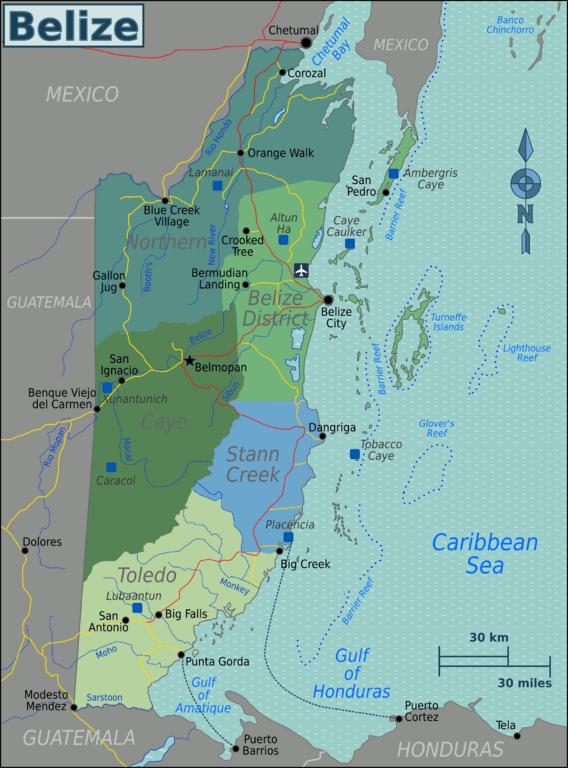
Map depicting the regions of Belize.
